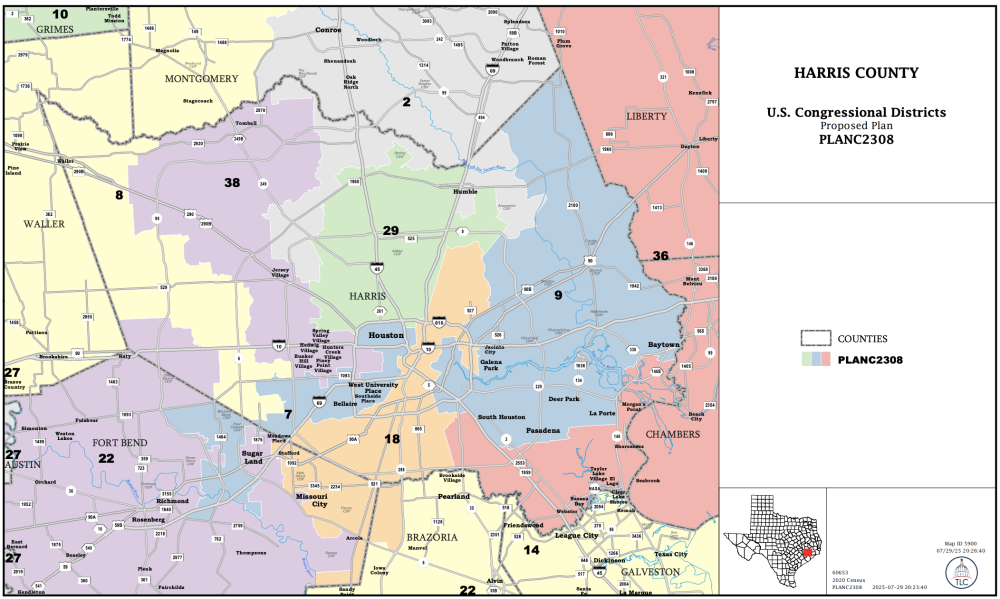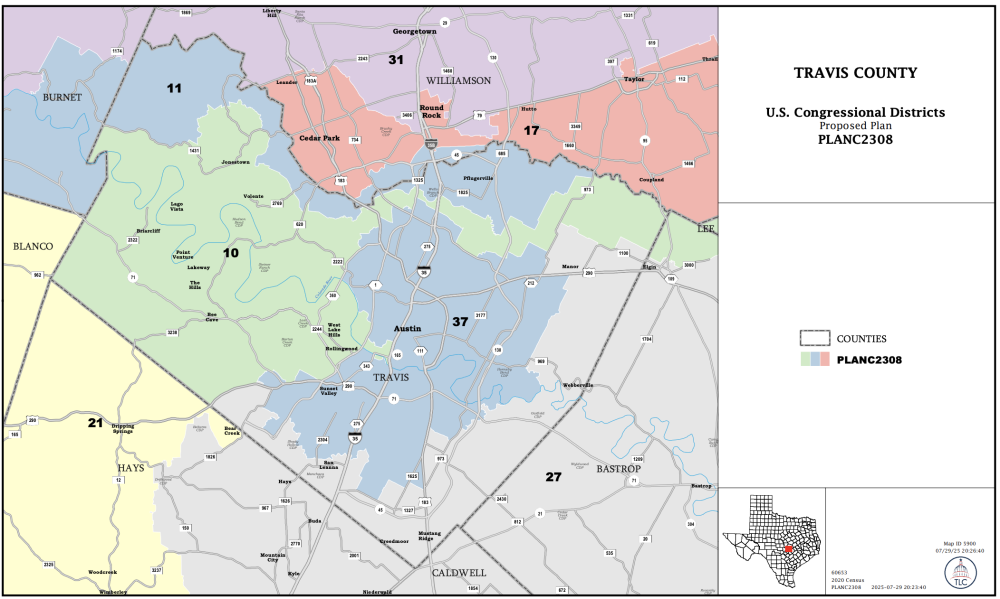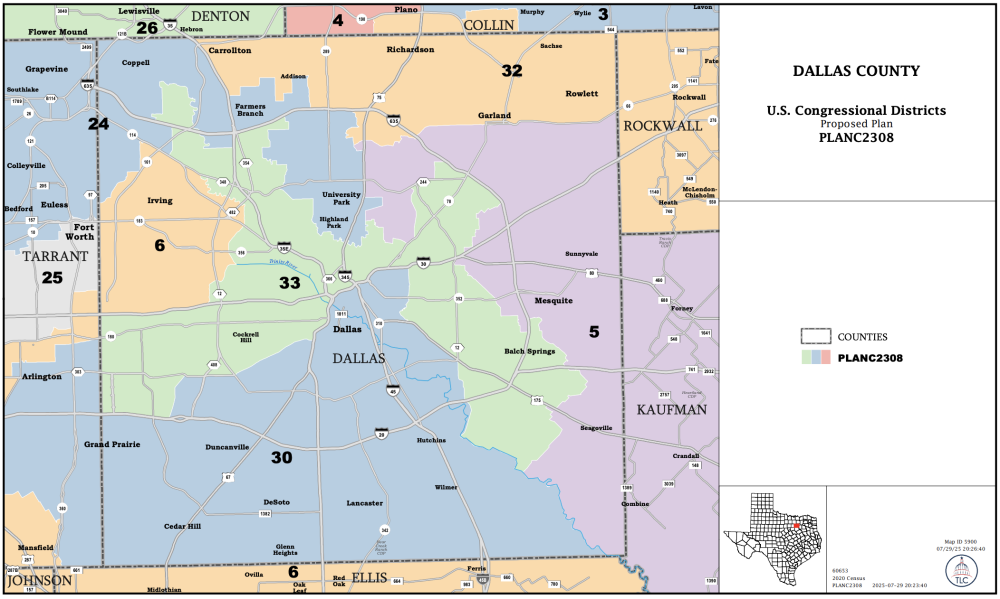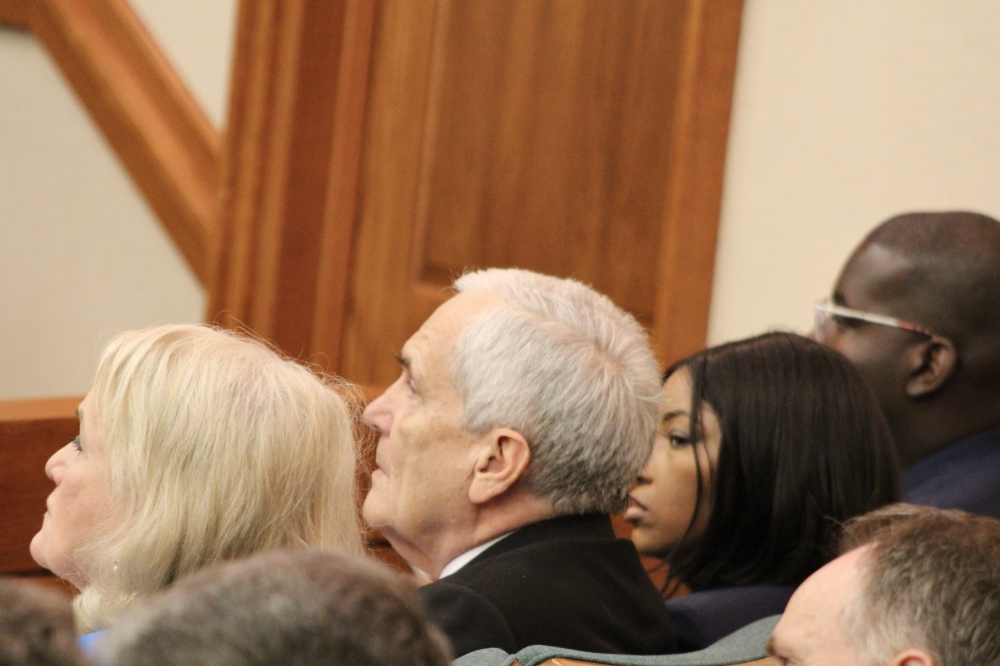In an attempt to block a planned vote on a newly-proposed congressional map, dozens of Texas House Democrats traveled to Chicago, Illinois; Albany, New York; Boston, Massachusetts; and other cities Aug. 3.
The full state House is scheduled to consider a proposal to redraw 37 of Texas’ 38 congressional districts at 3 p.m. Aug. 4; however, the 150-member body cannot do so unless at least 100 House lawmakers—known as a quorum—are present.
In an Aug. 3 statement, Gov. Greg Abbott said he was prepared to "remove the missing Democrats from membership in the Texas House" if they do not return to Texas, citing an August 2021 opinion by Attorney General Ken Paxton. In the opinion, issued after Democrats left the state in July 2021, Paxton said only Texas courts can determine that a lawmaker has abandoned their office.
"Texas courts recognize that a vacancy may occur by abandonment of office. ... Through a quo warranto action, a district court may determine that a legislator has forfeited his or her office due to abandonment and can remove the legislator from office, thereby creating a vacancy," Paxton wrote.
What they're saying
During an Aug. 3 news conference in the Chicago suburbs, Texas House Democrats insisted they were following the law and said they would take the effort to break quorum "day by day."
"By denying the Texas House of Representatives a quorum, we are using the power that we have as state legislators, under the Texas Constitution, to fight for our constituents," Rep. Chris Turner, D-Grand Prairie, told reporters. "We were all elected to fight for the people we represent, and that's exactly what we are doing here today."
Democrats did not say how long they planned to remain out of state. Texas House Democratic Caucus Chair Rep. Gene Wu, D-Houston, said members were prepared to do "whatever it takes" to prevent a new congressional map from passing.
"We have never given up trying to talk to our our colleagues on the other side," Wu said Aug. 3. "We've never stopped trying to have negotiations and try to work out something that will actually benefit the people of Texas. And we will continue to do that."
The current special legislative session ends Aug. 19, and Abbott has the authority to call additional special sessions at any time.
According to the Texas House rules manual, House lawmakers who intentionally break quorum or are otherwise “absent without leave for the purpose of impeding the action of the House” can be:
- fined $500 per day
- required to cover the costs of “securing [their] attendance"
- censured
- expelled from the body by a two-thirds vote
If 51 or more House lawmakers are absent, the chamber will be blocked from passing any legislation, including flood recovery proposals in the wake of the deadly Hill Country floods and other policies requested by Gov. Greg Abbott.
The background
House Democrats have called the proposed congressional map “intentionally racially discriminatory,” noting during an Aug. 1 committee hearing that it could “dilute” their constituents’ voting power by splitting up certain historically Black and Hispanic districts.
Republicans pushed back against Democrats’ concerns Aug. 1, noting that the map would create one new district where Hispanic residents make up a majority of eligible voters, and two new majority-Black districts.
Corpus Christi Republican Rep. Todd Hunter, who filed the redistricting plan on July 30, said Aug. 1 that 37 of Texas’ 38 congressional districts would be redrawn “to some degree,” with the primary changes “focused on five districts... to “allow Republican candidates the opportunity to compete.”
“Different from everybody else, I'm not beating around the bush—I'm telling you that we have five new districts, and these five new districts are based on political performance,” Hunter told members of the House redistricting committee Aug. 1.
Hunter said the proposal targets the following congressional districts:
- TX-09, served by U.S. Rep. Al Green, D-Houston
- TX-28, served by U.S. Rep. Henry Cuellar, D-Laredo
- TX-32, served by U.S. Rep. Julie Johnson, D-Farmers Branch
- TX-34, served by U.S. Rep. Vicente Gonzalez, D-McAllen
- TX-35, served by U.S. Rep. Greg Casar, D-Austin

The plan to redraw Texas’ congressional lines comes amid pressure from the Trump administration to increase Republicans’ narrow U.S. House majority, according to previous Community Impact reporting. All states are constitutionally required to redistrict every 10 years, after a census, although mid-decade redistricting is not unprecedented—Texas lawmakers also redrew the state's congressional map in 2003.
In a July 7 letter, the U.S. Department of Justice said it found that four of Texas’ congressional districts were unconstitutionally gerrymandered based on race. Abbott referenced those concerns when asking lawmakers to begin the congressional redistricting process, but Hunter said Aug. 1 that he had “no personal knowledge” of the letter.
“It's not guaranteed that [the proposed districts] would be Republican, but they would have a better chance of electing Republicans than they did before,” Rep. David Spiller, R-Jacksboro, said Aug. 1.
Hunter told committee members he did not draw the proposed map himself. He said he worked with Butler Snow law firm—which has branches in Austin, Dallas and other states—although he was not sure who drafted the proposal.
Some Texas Democrats said they were concerned that the map was drawn with out-of-state interests in mind.
“It's clear to me that these maps aren't drawn by anybody from Texas,” Casar said. “The southern suburbs of Austin and Hays County that I currently proudly represent, they have been drawn out to Port Aransas. There's northern parts of Austin drawn to northeast Texas; western parts of Austin drawn out to Midland-Odessa.”

“These proceedings today affect all of Texas,” committee vice chair Rep. Jon Rosenthal, D-Houston, said. “And really, this is going to create a ripple effect around the country. What we do here will affect what happens in the United States.”
State lawmakers have until Aug. 19, the final day of their 30-day special legislative session, to send a new congressional map to Abbott’s desk.
Zooming in
All legislative and congressional maps must comply with the federal Voting Rights Act, which prohibits voting practices or procedures that limit the ability of people of color to “elect representatives of their choice.” During public testimony, several congressional Democrats argued Aug. 1 that the proposed map would “dilute” their constituents’ voting power by splitting up certain historically Black and Hispanic districts.
U.S. Rep. Jasmine Crockett, D-Dallas, noted that U.S. Census Bureau data shows about 39% of Texas’ population is white and non-Hispanic. Yet about 60% of the proposed congressional districts would be majority-white, she said.
“Every citizen should have equal access to choose their representation, instead of crowding Black people to the point that all the Black people in the state only have two representatives, and all the Latinos in the state are crowded to the extent that their voting power is diminished,” Crockett told the committee.

“I just wanted to make it clear that... there are minority Republicans,” Rep. Katrina Pierson, R-Rockwall, said during the hearing. “I mean, there [are] Black and Hispanic Republicans on the dais, so I just don't think it's fair to just assume that the Anglo districts are going to lead to more Anglo representation.”
Pierson said that during previous redistricting hearings, “stakeholders testified that they felt like the population of Black voters in the state did not have appropriate representation.”
“This [proposed] map actually shows where there's now two majority-Black districts,” Pierson said.
Denton mayor Gerard Hudspeth told the committee that Texas must do “everything we can” to increase Republican representation.
“This plan gives voters in and around my area an opportunity to elect another Republican member of Congress,” Hudspeth said. “This bill is an important step, and I'll say that as the first Black mayor elected to the city of Denton.”
One more thing
Crockett told the committee she planned to request an emergency court order fighting the proposed congressional map “as soon as possible.”
“I do feel as if there is a violation right now, if this map passes, of the Voting Rights Act for so many reasons,” Crockett said Aug. 1. “Every single time Texas has gone to court [over its congressional maps], they have lost for being intentionally racially discriminatory. I believe that there will be no difference this time.”
A lawsuit over Texas’ current maps, which were drawn in 2021, is currently in court.
Vasut and King have said they do not think Texas’ current legislative or congressional maps broke federal laws. State officials also recently testified in court that they did not consider race when redrawing districts in 2021, according to Fair Maps Texas, a coalition of advocacy groups that opposes mid-decade redistricting.








